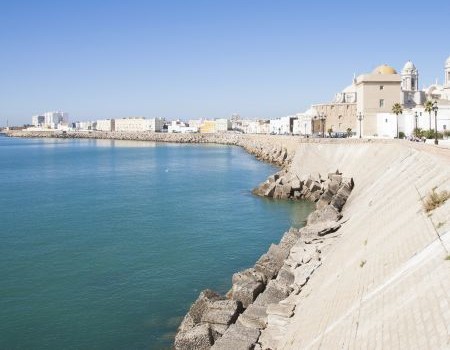Seawall Repair or Replacement: 7 Signs Your Stuart Seawall Is Failing

Living on the waterfront in Stuart is a privilege, but it also comes with responsibilities—chief among them, protecting your shoreline. Your seawall is your first line of defense against erosion and storm surges, and when it starts to fail, the consequences can be serious. At Lands End Marine Construction, we specialize in seawall repair and full replacements across the Treasure Coast. Below, we’ll cover the most common failing seawall signs Martin County homeowners should watch for and whether those signs point to repair or replacement.
1. Cracked or Spalled Seawall Caps
The seawall cap, the reinforced top edge of your wall, keeps panels aligned and adds stability. When cracks or surface spalling appear, it weakens the entire structure. In some cases, cracked seawall cap repair in Palm City is enough to restore strength if caught early. However, widespread cracks often suggest water intrusion and reinforcement corrosion, which can signal the need for more extensive work. Left unaddressed, the problem can spread quickly.
2. Leaning or Bowing Panels
If you notice leaning seawall panels, your wall may be under uneven soil or water pressure. While minor shifts can sometimes be stabilized with anchors or tie-back reinforcement, significant bowing often requires seawall replacement Treasure Coast. Ignoring this sign risks sudden wall failure, especially during a storm surge.
3. Soil Loss Behind the Wall
When you see settling patios, gaps near walkways, or sinkholes forming, soil loss behind the seawall is likely the culprit. This usually means water is escaping through weakened joints. Sometimes patching or adding relief drains can correct the issue, but advanced soil loss means the seawall is no longer performing its essential job of holding land in place. Replacement may be necessary to prevent property damage.
4. Standing Water or Poor Drainage
Water pooling along the landward side of your wall is a red flag. Poor drainage can erode soil and put dangerous pressure on the panels. Installing new weep holes or drainage systems may solve the issue. But if the wall structure is already compromised, a new seawall may be the safer and more cost-effective choice.
5. Exposed or Failing Tie-Backs
Tie-backs are buried anchors that secure your seawall against water pressure. If they become exposed, rusted, or loose, the wall can quickly destabilize. In some situations, tie-backs can be replaced, but in older walls, their failure is usually a sign that the system has reached the end of its life.
6. Separated Joints or Gaps Between Panels
Open joints between seawall panels allow water to flow freely, washing soil away. While small separations can be sealed, large gaps often mean the panels are shifting beyond repair. Replacement ensures long-term shoreline protection and prevents further erosion.
7. Toe Scour at the Base
The “toe” of the seawall, where it meets the seabed, is particularly vulnerable. If you see erosion or washout at the base, the seawall is losing foundational support. Repairs may buy time, but significant scour almost always points toward full replacement.
Should You Repair or Replace?
The decision depends on the severity of the damage and the age of your structure. Most seawalls last 30 years or more, depending on material and maintenance. If your wall is relatively new and damage is limited—such as small cracks or drainage issues—repairs can extend its life. But when multiple structural problems appear together, or when the wall is nearing its expected lifespan, replacement is the safer option.
Choosing replacement early often saves money in the long run by preventing emergency failures and protecting landscaping, docks, and nearby structures. Remember, your seawall isn’t just a barrier. It’s a critical investment in your waterfront property’s safety and value. Our marine construction company in Stuart provides both repair solutions and full replacements, supported by our seawall construction page.
Protect your waterfront investment before small issues turn into costly damage. Contact Lands End Marine Construction today to schedule your seawall inspection or discuss repair and replacement options for your Stuart or Treasure Coast property.
REACH OUT TO LANDS END MARINE CONSTRUCTION IN STUART AND SURROUNDING AREAS FOR YOUR NEXT DOCK BUILD PROJECT